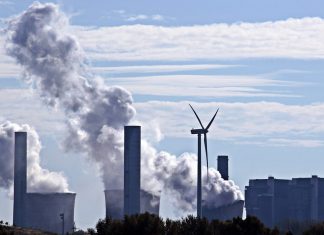Packaging waste is excessive and a global environmental catastrophe with no escape. Every year, millions of tons of unnecessary packaging, plastic packaging, Styrofoam packaging, and cardboard packaging, end up in landfills, the ocean, and on the street, that's over 140 million metric tons annually. Thirty-nine percent of waste occurs from plastic packaging alone, much of which remains in the environment for more than 500 years and accumulates.
The population is aware of that, the option for sustainability is there, and sustainable packaging is cost-effective and easy to use, avoid, and access, we would never have it if sustainability was merely a logo on a product. Sustainable packaging is critical to reducing waste, preserving resources, and fostering a culture of ecology for this generation and generations to come.
The Environmental Impact of Traditional Packaging
The problem with packaging is that it has an anti-environmental effect. Plastic packaging is made from fossil fuels and requires a tremendous amount of energy to create, only to be discarded and either buried one-hundred-plus years in the ground until it eventually breaks down to microplastics or causes water pollution.
Styrofoam is worse, it isn't usually recycled, and it never breaks down. The Ellen MacArthur Foundation reports that packaging accounts for 36% of global municipal solid waste, yet only 14% of plastic packaging gets recycled.
This leaves most either buried in landfills or floating in the ocean, wreaking havoc on fragile environments. Furthermore, the creation of these packaging materials releases greenhouse gases that complicate climate control, meaning the entire idea of traditional packaging exists linearly, from resource acquisition to ultimate resting place.
Understanding Sustainable Packaging
But what is sustainable packaging? Packaging that does less harm and more good. Sustainable packaging is recyclable, biodegradable, or compostable. It is made from virgin or recycled natural resources (i.e., plants, paper). It comes in the form of bioplastics made from corn and bags that dissolve in your compost bin with food scraps.
The goal of sustainable packaging is a circular economy where products do not end up in landfills but instead are transformed, reused, or repurposed. Recently in this innovative marketplace, some have created edible packaging and water-soluble bags, products that sound like they belong in the future but are available in stores today.
Companies like R2E-Pack, who are leaders in the import and export of packaging products, demonstrate sustainability by using biodegradable materials in their products, manufactured with a focus on quality and environmental preservation.
From food and garbage bags to shrink wraps for industrial use - their approach reduces the environmental impact of packaging waste.
R2E-Pack helps minimize a significant global issue by choosing eco-friendly materials that break down naturally, reduce pollution, and preserve the environment for future generations, showcasing a commitment to sustainable practices. Sustainable packaging is not just interchanging one product for another, it comes from a mindset of practicality and reduced carbon footprint.
Benefits of Sustainable Packaging
Sustainability in packaging has a universally positive impact. Environmentally, it decreases landfill overcapacity, decreases marine debris and pollution, and decreases carbon emissions from producing sustainable materials versus non-renewable resources.
Economically, it helps businesses, even though initially it appears to be a more expensive venture, less material waste and less waste removal in the end helps the bottom line. Sustainable choices create sustainable customer loyalty, 73% of consumers would pay more for sustainable packaging, sustainability goes a long way with loyal customers.
Societally, less waste creates healthier populations, and responsibly sourced materials create equity. Packaging is one of the most regulated materials by governmental oversight, sustainable efforts now put businesses ahead of the game for compliance in the future.
Consumer Awareness and Market Demand
Yet it's consumers driving this momentum, and they got vocal. Sixty percent of consumers internationally pay attention to sustainable packaging when they purchase items, according to a 2024 report from McKinsey. But why?
Awareness from documentaries, viral social media events, and the overwhelming "War on Plastic" campaigns have brought attention to the issues. They know what's up.
They care about what humans are going through, and they're using their wallets as a wake-up call to encourage change. Companies use this to their advantage. For example, one new intention that came to fruition was Unilever's announcement that by 2025, all of its products would have recyclable, reusable, or compostable packaging.
It went down smoothly with public consumption, increasing brand equity and revenues. Even Loop, the newest company to hit the shelves, with its subscription-based program offering deliveries in refillable containers a la milkmen, is succeeding based on its brand equity and intention to purchase sustainable offerings.
For The End
Sustainable packaging is not merely an industry trend or optional add-on, it is required for the world's future. Sustainable packaging equates to less waste, recyclable materials, and a reduced carbon footprint, which are all excellent for our precarious position in the world.
There may be implementation challenges, mainly concerning consumer buy-in, but once the packaging is established and people see the results in revitalized ecosystems, happy consumers, and one innovative company, this will not be the best option, but the only one.
Sustainable packaging will ensure people know what elements of products they need moving forward, with the technology to create them readily available. It's a small change with a huge impact that both consumers and innovators alike need to adopt for a better world.






